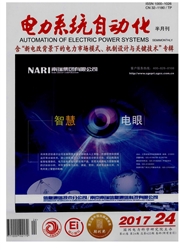

 中文摘要:
中文摘要:
为深入研究新型光伏器件的实际性能及影响光伏电站发电效率的关键性因素,设计并建成一座多种光伏设备组合交叉安装的50 k Wp并网光伏实验电站。根据电站实际运行数据,对比了不同气象条件下光伏阵列选用不同类型组件、智能优化器以及不同容量逆变器的发电状况,分析了辐射量变化对光伏电站发电量的影响。结果表明:各类型光伏组件中双面电池输出特性表现最佳,其发电量高于其他类型组件;对于无阴影遮挡的光伏发电系统,智能优化器的作用得不到有效发挥;采用较小容量逆变器可减少太阳能电池组串模块间的差异性带来的影响,增大光伏阵列总发电量;受太阳辐照度变化影响各类型光伏组件实际输出最为稳定的是多晶硅电池。多晶硅电池和双面电池在并网光伏发电系统应用中具有较大的优势。
 英文摘要:
英文摘要:
To confirm actual performance of new photovoltaic devices and key factors affecting the efficiency of PV system, 50 kWp grid - connected PV power station that integrated a variety of photovoltaic devices and installation metliods was designed and built. Based on actual operating data, thepower generation of PVa rrays that installed different PVmodule s , inverters and smart optimizer under dife rent meteorological condhions was compared. Furthermore, the influence of radiation on the power generation was analyzed. The results show that the bifacial PV module has the bet output performance and its power generation is higher than other PV modules. Smart optimizer has lessefect on PV system wit!i no shadows, while small capacity inverter can reduce the ferent PV modules and increase the total power generation. Moreover tiie actual output of polycrystal-line silicon solar cell is most stable in various types of photovoltaic module under the influence of solar i iadiance variations. Comprehensive research results show that polycrystalline silicon solar celland bifacial PV module have a great advantage in the application of grid connected er generation system.
 同期刊论文项目
同期刊论文项目
 同项目期刊论文
同项目期刊论文
 期刊信息
期刊信息
